Veracruzana Cuisine: Regional Varieties of Mexican Food
Imagine yourself walking down the bustling streets of Veracruz, a coastal state in Mexico known for its rich culinary heritage. The tantalizing aroma of freshly grilled seafood lingers in the air as you pass by vibrant market stalls overflowing with colorful fruits and vegetables. Your taste buds tingle with anticipation as you stumble upon a small eatery serving traditional Veracruzana cuisine. You decide to indulge in a plate of “Pescado a la Veracruzana,” a famous dish made from fresh fish cooked in a flavorful tomato sauce infused with capers, olives, and chili peppers. This mouthwatering experience serves as just one example of the diverse and captivating world that awaits within the realm of Veracruzana cuisine.
Exploring regional food variations is essential to understanding the cultural significance and diversity present within Mexican gastronomy. Each region has its own unique flavors, ingredients, and cooking techniques that have been passed down through generations. In this article, we will delve into the intricate tapestry of Veracruzana cuisine – an enchanting blend of indigenous, Spanish, African, and Caribbean influences that have shaped the gastronomic identity of this region. We will explore key dishes such as “Huachinango a la Veracruzana” (red snapper in Veracruz style), “Arroz a la Tumbada” (rice with mixed seafood), and “Empanadas de Pescado” (fish empanadas).
“Huachinango a la Veracruzana” is perhaps the most iconic dish of Veracruz. It features red snapper cooked in a rich tomato sauce, flavored with onions, garlic, green olives, capers, and chili peppers. The combination of these ingredients creates a harmonious balance of flavors – tangy, savory, and mildly spicy all at once.
Another popular dish is “Arroz a la Tumbada,” which showcases the abundance of fresh seafood found along the Veracruz coast. This flavorful rice dish is cooked with an assortment of seafood such as shrimp, fish fillets, clams, mussels, and octopus. It is seasoned with tomatoes, onions, garlic, chili peppers, and various herbs and spices.
For those craving something handheld, “Empanadas de Pescado” are an excellent choice. These flaky pastries are filled with a mixture of fish seasoned with herbs and spices like oregano and cumin. They are then deep-fried until golden brown and served hot as a delightful snack or appetizer.
Veracruzana cuisine also boasts unique breakfast dishes such as “Huevos Tirados,” scrambled eggs mixed with shredded beef or chicken in a tomato-based sauce spiced up with chili peppers. Another breakfast favorite is “Chilaquiles Veracruzanos,” crispy tortilla strips bathed in a delicious salsa made from tomatoes and chilies.
When it comes to desserts, Veracruzana cuisine offers delights like “Cocadas,” sweet coconut candies often enjoyed during celebrations or as an everyday treat. These chewy confections are made by combining grated coconut with sugar, condensed milk, and vanilla essence.
It’s important to note that Veracruzana cuisine is not limited to these dishes alone. The region also boasts a wide array of tamales, moles, ceviches, and other culinary creations that showcase the bounty of local ingredients and cultural influences.
Exploring Veracruzana cuisine is a journey into the heart of Mexican gastronomy – a celebration of flavors, traditions, and the vibrant tapestry of cultures that have shaped this coastal state’s culinary identity. So next time you find yourself in Veracruz or seeking to experience its vibrant cuisine from afar, be sure to indulge in these regional delights for an unforgettable gastronomic adventure.
Traditional dishes of Veracruzana cuisine
Veracruz, a coastal state in Mexico, offers a rich and diverse culinary tradition known as Veracruzana cuisine. This regional variety of Mexican food is characterized by its unique blend of indigenous ingredients and European influences. One example that exemplifies the fascinating fusion found within Veracruzana cuisine is the iconic dish, Huachinango a la Veracruzana.
Huachinango a la Veracruzana showcases the vibrant flavors and colorful presentation typical of this cuisine. It features red snapper cooked with tomatoes, onions, garlic, olives, capers, and various herbs and spices. The combination of these ingredients creates a harmonious balance between acidity, sweetness, and spiciness on the palate.
To fully appreciate the allure of traditional Veracruzana dishes like Huachinango a la Veracruzana, it is essential to understand their cultural significance. Here are four key elements that contribute to the emotional connection people have with this cuisine:
- Historical legacy: Veracruz has long been an important port city for trade and commerce dating back to colonial times. As such, its culinary heritage reflects both Spanish influence from conquistadors and African influence brought by slaves.
- Eclectic flavor profiles: The use of native ingredients such as vanilla beans, chiles (such as jalapeños), tropical fruits (like papaya), fresh seafood (including shrimp and crab), along with European staples like olive oil and garlic results in a dynamic taste experience.
- Visual aesthetics: Traditional Veracruzana dishes often feature vibrant colors derived from natural ingredients like tomatoes or annatto seed-based seasonings. These visually striking presentations not only stimulate appetite but also evoke feelings of joy and pleasure.
- Cultural celebrations: Many traditional Veracruzana dishes are closely associated with specific events or holidays. For instance, during Day of the Dead festivities, locals prepare mole sauce, tamales, and sugar skulls to honor their deceased loved ones. These culinary traditions play a vital role in connecting individuals with their heritage.
In understanding the fascinating elements that define Veracruzana cuisine, it becomes apparent how indigenous ingredients have shaped its distinctive character. The next section will delve into the influence of these native components on this vibrant culinary tradition without interruption.
Influence of indigenous ingredients on Veracruzana cuisine
Regional Varieties of Veracruzana Cuisine: An Exploration
To truly appreciate the richness and diversity of Veracruzana cuisine, it is essential to delve into its regional variations. One captivating example lies in the coastal region of Tuxpan, where the fusion of indigenous ingredients with Spanish influences has given birth to a unique culinary tradition.
In this particular area, one can witness how ancient Mayan flavors seamlessly blend with European techniques. A noteworthy dish that exemplifies this harmonious marriage is “Pescado a la veracruzana.” This succulent fish dish combines fresh catch from the Gulf of Mexico with an aromatic tomato sauce infused with native herbs and spices such as epazote and hoja santa. The result is a tantalizing symphony of flavors that captivates both locals and visitors alike.
Exploring further, we come across four key elements that define the charm and allure of Tuxpan’s regional cuisine:
- Indigenous Ingredients: From vanilla beans harvested in Papantla to the delicate aroma of chiltepin peppers grown in local gardens, these traditional ingredients reflect centuries-old agricultural practices deeply rooted in the region’s cultural heritage.
- Culinary Techniques: Passed down through generations, cooking methods like wrapping food in banana leaves for steaming or using volcanic stone mortars for grinding spices contribute to the distinct character of Tuxpan’s gastronomy.
- Seafood Delicacies: With its proximity to the ocean, Tuxpan boasts an abundant array of seafood options ranging from briny shrimp ceviche to delectable octopus cocktails served amidst breathtaking seaside vistas.
- Artisanal Craftsmanship: Local artisans play an integral role by handcrafting earthenware pots used for slow-cooking stews or intricately carving molinillos—the wooden tools employed to froth hot chocolate—to enhance indulgent desserts.
To fully grasp the intricate tapestry woven by Veracruzana cuisine, one must not overlook the influence of these regional variations. By acknowledging and celebrating the unique contributions of each locality, we can truly appreciate the vibrant mosaic that defines Veracruz’s culinary landscape.
Transitioning seamlessly into our next exploration, we now turn our attention to the popular spices and flavors used in Veracruzana cuisine.
Popular spices and flavors used in Veracruzana cuisine
Transitioning smoothly from the previous section, where we explored the influence of indigenous ingredients on Veracruzana cuisine, let us now delve into the diverse range of popular spices and flavors that contribute to the unique taste and appeal of this regional Mexican culinary tradition.
To illustrate how these spices and flavors interact harmoniously, consider the example of a classic Veracruzana dish called “Huachinango a la Veracruzana.” This traditional recipe features red snapper cooked with tomatoes, onions, garlic, olives, capers, and jalapeño peppers. The combination of these essential ingredients creates a vibrant medley of tastes that exemplifies the distinct flavor profile found throughout Veracruzan cooking.
When examining the popular spices and flavors utilized in Veracruzana cuisine as a whole, several key elements stand out:
- Citrus fruits such as limes and oranges add bright acidity to dishes.
- Spices like cinnamon and cloves infuse warmth and depth into many savory recipes.
- Herbs like epazote lend an earthy aroma while complementing other ingredients.
- Chilies ranging from mild to fiery bring varying degrees of heat to different dishes.
These components work together synergistically, resulting in complex layers of flavor that are both satisfyingly robust yet well-balanced. From tangy citrus notes cutting through rich stews to subtle hints of spice enhancing delicate seafood preparations, every bite is an invitation to savor the intricate tapestry of tastes that characterizes Veracruz’s gastronomy.
| Flavor Profile | Key Ingredients | Notable Dish |
|---|---|---|
| Tangy | Lime juice, tomatoes | Camarones a la Diabla (Spicy Shrimp) |
| Smoky | Chipotle peppers, roasted garlic | Pollo en Mole Poblano (Chicken in Mole Sauce) |
| Fresh and Herbal | Cilantro, epazote | Sopa de Lima (Lime Soup) |
| Spicy and Aromatic | Cloves, cinnamon, ancho chili powder | Carne Adobada (Marinated Pork) |
Incorporating these flavors into various dishes allows Veracruzana cuisine to offer something for every palate. From the tangy heat of camarones a la diabla to the aromatic allure of carne adobada, the richness of history and cultural heritage shines through each mouthwatering bite.
Transitioning seamlessly now from our exploration of popular spices and flavors used in Veracruzana cuisine, let us discover the distinctive seafood dishes that have become synonymous with this vibrant culinary tradition.
Distinctive seafood dishes in Veracruzana cuisine
Distinctive Seafood Dishes in Veracruzana Cuisine
Building upon the popular spices and flavors used in Veracruzana cuisine, let us now delve into the realm of distinctive seafood dishes that grace the tables of this rich culinary tradition. One such dish is Huachinango a la Veracruzana, which showcases the vibrant coastal influence on the region’s cuisine.
Imagine sitting by the shores of Veracruz, indulging in a plate of perfectly cooked red snapper smothered in a tangy tomato sauce infused with olives, capers, and aromatic herbs. This iconic dish exemplifies the fusion of Spanish and Afro-Caribbean influences that characterizes Veracruzana cuisine. It embodies both simplicity and complexity—a testament to the skillful combination of ingredients.
To further explore the variety within Veracruzana seafood dishes, consider these highlights:
- Pescado a la talla: Grilled fish marinated with adobo sauce made from chili peppers, garlic, oregano, and other spices.
- Tamales de cazón: Corn dough stuffed with shark meat seasoned with tomatoes, onions, chilies, and epazote leaves before being wrapped in banana leaves and steamed.
- Arroz a la tumbada: A flavorful rice dish featuring an assortment of succulent seafood such as shrimp, crabmeat, clams, octopus, squid rings cooked together with vegetables and served generously seasoned with local spices.
- Ostiones en su concha: Freshly shucked oysters served raw on their shells accompanied by lime wedges and spicy sauces.
These enticing delicacies create an emotional connection between food lovers and the unique coastal heritage found along Mexico’s Gulf Coast. The following table provides insight into some key aspects that make these dishes truly remarkable:
| Dish | Key Ingredients | Flavor Profile |
|---|---|---|
| Huachinango a la Veracruzana | Red snapper, tomatoes, olives, capers, herbs | Tangy and flavorful |
| Pescado a la talla | Grilled fish, adobo sauce | Spicy and smoky |
| Tamales de cazón | Corn dough, shark meat | Savory and aromatic |
| Arroz a la tumbada | Seafood mix, vegetables | Rich and satisfying |
| Ostiones en su concha | Fresh oysters | Briny and refreshing |
In essence, the seafood dishes of Veracruzana cuisine bring together diverse ingredients to create an explosion of flavors that transport diners to the vibrant coastal region. In our next section on “Fusion of Spanish and Afro-Caribbean influences in Veracruzana cuisine,” we will explore how this fusion further enriches the culinary landscape of Veracruz.
(Fusion of Spanish and Afro-Caribbean influences in Veracruzana cuisine)
Fusion of Spanish and Afro-Caribbean influences in Veracruzana cuisine
Distinctive seafood dishes in Veracruzana cuisine showcase the region’s abundant coastal resources and culinary creativity. One notable example is the famous dish known as “Pescado a la Veracruzana” (Veracruz-style fish), which combines fresh fish with a flavorful sauce made from tomatoes, onions, garlic, olives, capers, and herbs. This vibrant combination of ingredients creates a harmonious blend of flavors that exemplifies the unique taste of Veracruzana cuisine.
When exploring Veracruzana cuisine further, it becomes evident that Spanish and Afro-Caribbean influences have played a significant role in shaping its distinct flavors. These cultural influences can be seen in various aspects of the cuisine, including cooking techniques, ingredient choices, and flavor profiles. For instance:
- The use of plantains: In Veracruzana cuisine, ripe plantains are often used to add a touch of sweetness to savory dishes like stews or tamales.
- Incorporation of spices: Spices such as cinnamon and cloves are frequently used in both sweet and savory preparations to enhance the depth of flavor.
- Fusion of cooking techniques: Spanish methods like frying and braising are combined with Afro-Caribbean techniques such as marinating meats in citrus juices for added tenderness.
- Emphasis on tropical fruits: Veracruzana dishes often feature an array of tropical fruits like pineapples, papayas, or mangoes that provide a refreshing contrast to richer flavors.
To better understand this fusion between Spanish and Afro-Caribbean influences in Veracruzana cuisine, let us examine some examples through a table:
| Influence | Example |
|---|---|
| Spanish influence | Braised pork seasoned with pimentón de La Vera |
| (Spanish smoked paprika) | |
| Afro-Caribbean | Jerk chicken served with black beans and rice |
| influence | flavored with coconut milk |
| Spanish influence | Paella with local seafood like shrimp, |
| with a twist | mussels, and octopus |
| Afro-Caribbean | Ropa Vieja (shredded beef) served alongside |
| influence | fried plantains and yucca fries |
By examining these examples, it becomes evident that Veracruzana cuisine is a delightful amalgamation of diverse culinary traditions. The blending of Spanish techniques with Afro-Caribbean flavors has created a unique gastronomic experience that continues to captivate both locals and visitors alike.
Transitioning into the subsequent section about “Famous Veracruzana desserts and beverages,” one cannot overlook the sweet treats and refreshing drinks that perfectly complement this rich cuisine. From indulgent desserts like leche frita (fried milk custard) to thirst-quenching beverages like agua de horchata (rice-based drink), Veracruzana cuisine offers a wide range of options to satisfy every palate.
Famous Veracruzana desserts and beverages
Building on the rich cultural heritage of Veracruz, its cuisine showcases a fascinating fusion of Spanish and Afro-Caribbean influences. This unique blend creates a diverse range of flavors that are distinctly Veracruzana. To illustrate this culinary amalgamation, let us consider the example of “Pescado a la Veracruzana,” a traditional dish that exemplifies the interplay between these two distinct cultures.
“Pescado a la Veracruzana” is a classic Veracruzano seafood dish that combines elements from both Spanish and Afro-Caribbean cooking traditions. The dish typically features fish fillets cooked with tomatoes, onions, garlic, olives, capers, chili peppers, and various aromatic herbs. While the use of tomatoes, onions, and garlic reflects the influence of Spanish cuisine introduced during colonial times, ingredients such as olives and capers highlight an Afro-Caribbean touch. This blending of different culinary styles results in a delicious medley of flavors that characterizes Veracruzana cuisine.
When exploring Veracruzana cuisine further, it becomes evident that several key characteristics define this regional variety of Mexican food:
- Vibrant Flavors: Veracruzana dishes often incorporate bold and contrasting flavors to create an exciting sensory experience for the palate. The combination of sweet and sour notes along with spicy undertones adds complexity to many traditional recipes.
- Abundance of Seafood: Due to its coastal location along the Gulf of Mexico, seafood plays a prominent role in Veracruzana cuisine. Fish, shrimp, crab, octopus, and other marine delicacies feature prominently in numerous dishes.
- Versatile Use of Ingredients: The versatility demonstrated in ingredient selection contributes to the diversity found within Veracruzana cooking. Staples like cornmeal masa dough (used for making tamales) form the foundation for various dishes, while the inclusion of tropical fruits and vegetables adds a refreshing touch.
- Culinary Traditions Passed Down Through Generations: Veracruzana cuisine is deeply rooted in tradition, with recipes often passed down from generation to generation. This cultural continuity ensures that authentic flavors are preserved and celebrated.
To further illustrate the distinct characteristics of Veracruzana cuisine, consider the following table:
| Key Characteristics | Examples |
|---|---|
| Bold Flavors | Sweet and sour notes |
| Abundance of Seafood | Fish, shrimp, crab |
| Versatile Ingredients | Cornmeal masa dough |
| Culinary Traditions | Recipes passed down |
In conclusion, Veracruzana cuisine stands out for its fusion of Spanish and Afro-Caribbean influences, resulting in vibrant flavors and an abundance of seafood. The blending of culinary traditions has given rise to unique dishes like “Pescado a la Veracruzana,” showcasing the rich history and diverse cultural heritage of this region. By preserving traditional recipes and making use of versatile ingredients, Veracruzanos ensure that their distinctive cuisine continues to captivate food enthusiasts worldwide.



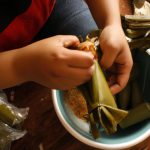
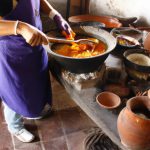

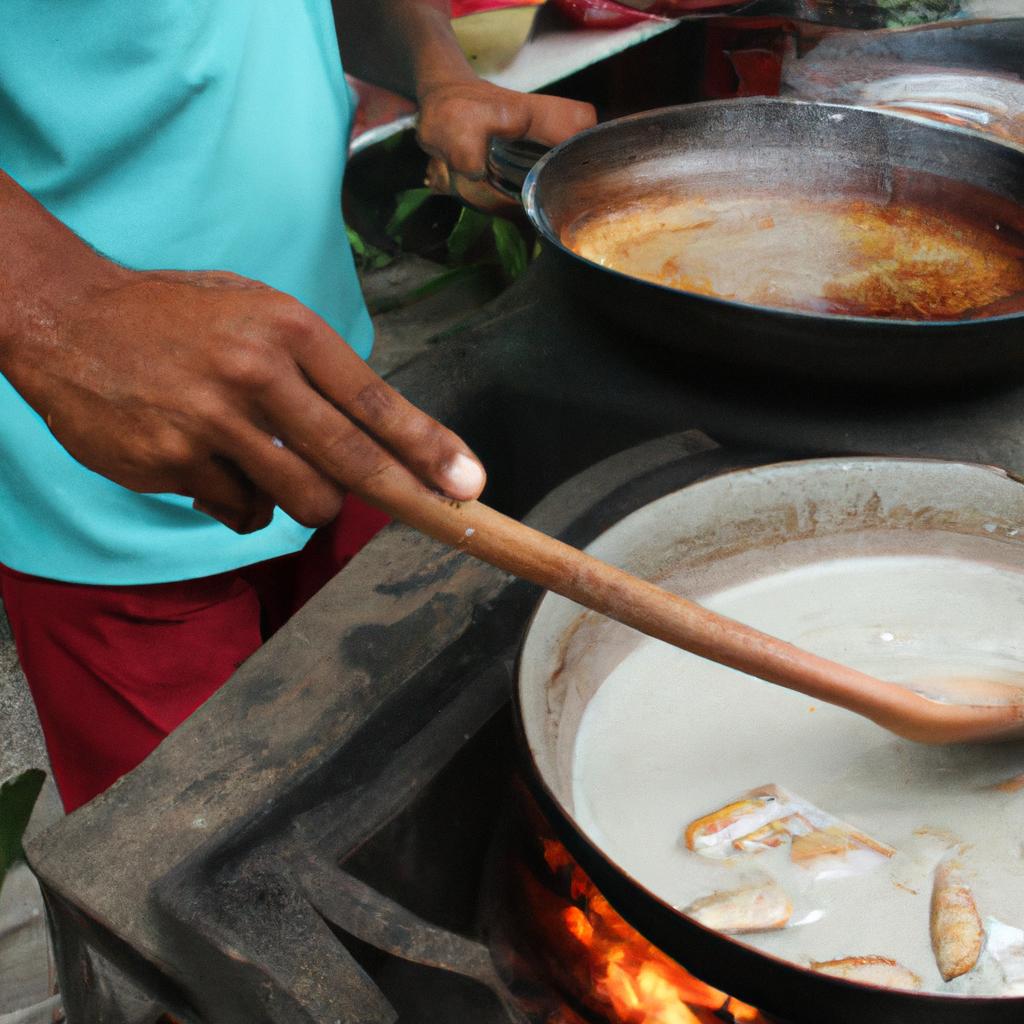

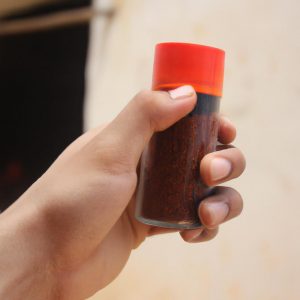
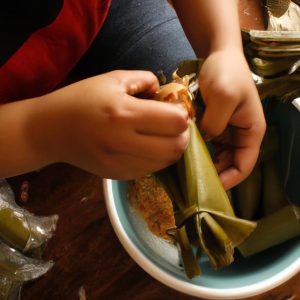
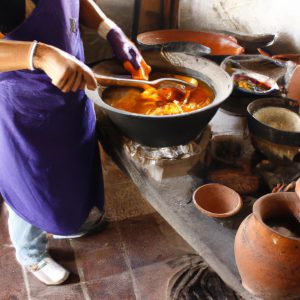
More Stories
Michoacan Cuisine: Regional Varieties of Mexican Food
Tex-Mex: Regional Varieties of Mexican Food
Oaxacan Cuisine: Regional Varieties of Mexican Food